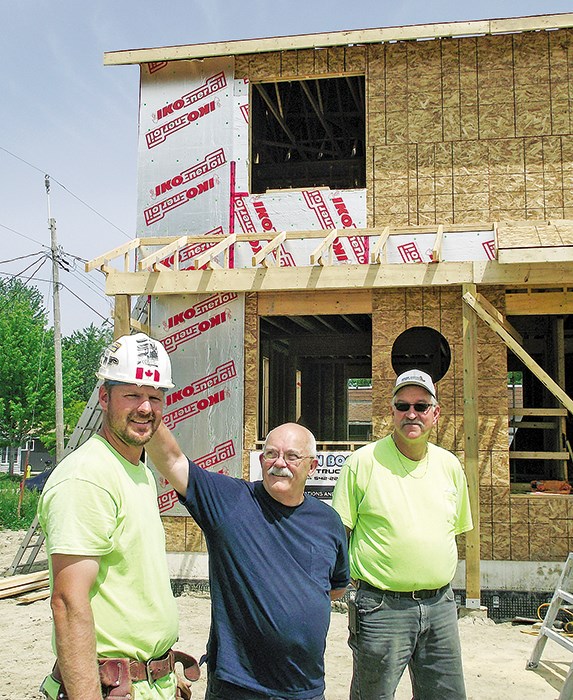Susan Roberts
Special to The Journal
A new home built by a Sarnia man on 3100 Egremont Rd. is incorporating several energy-efficient features that are expected to dramatically slash his energy bills.
Greg Ryan’s home uses an insulated form foundation and staggered-stud construction on the outside walls to sharply increase its R-value, or insulation rating.
Sarnia-area homebuilders are still faithful to traditional poured concrete and concrete block foundations, but the use of insulated concrete forms, or ICF, is growing slowly, said John Boot, owner of Boot Construction, who with his son Jonathan is building Ryan’s green home near Camlachie.
The foundation features concrete poured between rigid foam panels to create an airtight unit.
“They are not commonly used in the Sarnia-Lambton area,” Boot said. “About 10% of our foundations are ICF, which is a far cry from numbers in areas such as Grand Valley and Orangeville where people face more challenging winter weather.”
The building code calls for an R-value of 12 in new home basement walls, but Ryan’s ICF foundation is about R50, the Boots estimate.
As a result, “less heating and air conditioning are required to maintain a comfortable internal temperature,” Jonathan Boot said.
Another rarely used construction technique in Ryan’s home is staggered studs walls. Staggering the 2X4 studs allows for continuous sprayed foam insulation inside the wall, leaving fewer direct pathways for energy loss.
Ryan hopes the building techniques will cut his heating and electricity bills by at least 50%.
The biggest savings will be from hydro, because air conditioning won’t be needed during the day, only at night when electricity rates are lower, Boot said.
Why aren’t more homebuilders using these energy-saving designs that have been around at least 25 years?
They do increase the material cost of a home by 8% to 10%, and Sarnia builders and residents are comfortable with more familiar building techniques, Boot said.
On the other hand, the money saved on energy bills will recoup the higher up-front costs within about 10 years, Jonathan Boot said.
